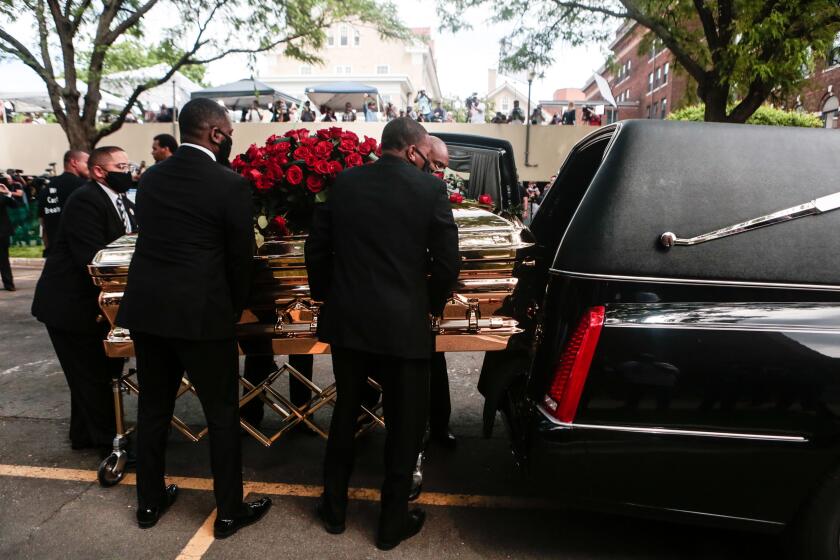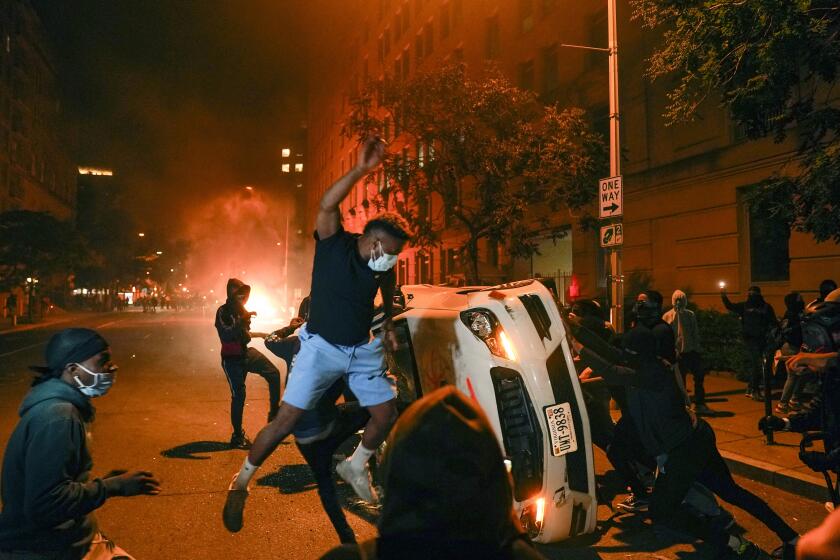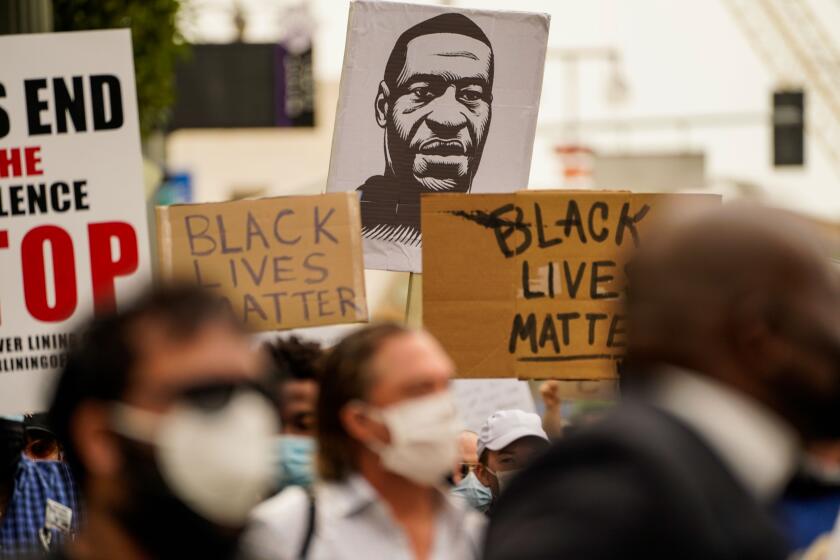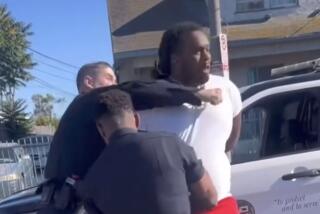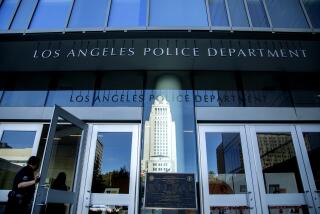Minneapolis police chief struggles to change the department’s culture
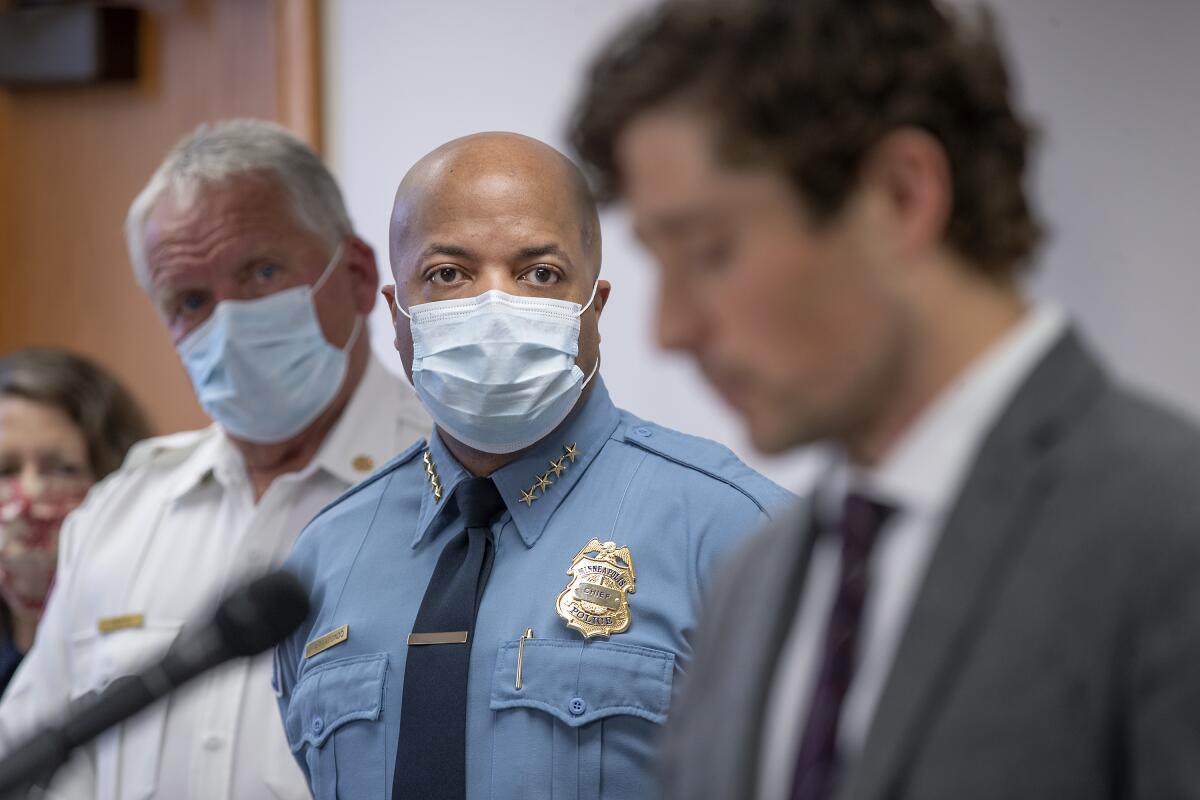
- Share via
MINNEAPOLIS — When Medaria Arradondo was tapped to lead the Minneapolis Police Department in 2017, he faced a public that was newly outraged by the fatal police shooting of a woman who had called 911 and that was still carrying deep mistrust from the killing of a black man two years earlier.
Many hoped Arradondo, the city’s first African American police chief, could change the culture of a department that critics said too frequently used excessive force and discriminated against people of color. He spoke of restoring trust during a swearing-in ceremony that became a community celebration featuring song, dance and prayer in a center close to where he grew up.
But George Floyd’s death, which ignited nationwide protests over racial injustice and police brutality, has raised questions about whether Arradondo — or any chief — can fix the department now facing a civil rights investigation.
Steve Belton, president and CEO of the Urban League of the Twin Cities, said Arradondo inherited a department with a history of misconduct “over many, many, many decades” and “it won’t be fixed overnight, maybe not even in this particular moment or with this particular chief. Change takes time.”
Arradondo, a fifth-generation Minnesotan, joined the Minneapolis Police Department in 1989 as a patrol officer, eventually working his way up to precinct inspector and head of the Internal Affairs Unit, which investigates officer misconduct allegations. Along the way, he and four other black officers successfully sued the department for discrimination in promotions, pay and discipline.
His predecessor as chief, Janee Harteau, promoted him to assistant chief in early 2017.
Mourners and protesters in Minneapolis memorialized George Floyd, whose death at the hands of police has prompted a nationwide movement.
He took over months later, after Harteau was forced out over the fatal shooting of Australia native Justine Ruszczyk Damond, who had called 911 to report a possible sexual assault behind her house. The black officer in that case was convicted of third-degree murder and is serving a 12-and-a-half-year prison term.
Damond’s death came two years after 24-year-old Jamar Clark, who was black, was killed in a scuffle with two white police officers, setting off weeks of protests. Neither officer was charged.
Arradondo made some quick changes, including toughening the department’s policy on use of body cameras. But City Council member Steve Fletcher said Arradondo was lenient with discipline in his first year as chief as he worked to build department morale, which made getting rid of problem officers difficult later.
“I think the chief’s heart is in the right place,” Fletcher said. “But I don’t think this department was ever going to let him get there. ... I think people understand he was in an impossible situation.”
Demonstrators break into a Minneapolis police precinct station after the department abandoned it, setting it ablaze, as protests spread nationwide.
Police spokesman John Elder said Arradondo has succeeded with some changes. For example, all officers — new and tenured — must go through training that stresses respectful interaction with the public. Elder said the chief was immersed in Floyd’s memorial service Thursday and was unavailable for an interview.
Arradondo quickly fired the four officers at the scene of Floyd’s death.
Derek Chauvin, the white officer seen on cellphone video pressing his knee into Floyd’s neck while ignoring pleas that he couldn’t breathe, has been charged with second-degree murder and other counts. City records show he had 17 complaints against him, only one of which resulted in discipline. He also shot two people during his 19-year career and was never charged.
The other three officers were charged with aiding and abetting second-degree murder.
Minneapolis woman recalls run-in with officer charged in George Floyd killing: ‘I lived to complain’
The woman detained by Minneapolis police officer Derek Chauvin in 2007 remembers being “dragged” away from her crying newborn and yelping dog. Chauvin was disciplined over the incident.
Harteau said she received pushback from the union when she was trying to implement reforms. This week she called on police union President Lt. Bob Kroll to resign after he called the unrest in the city “a terrorist movement” and suggested police should have been able to use tear gas and more forceful measures early on.
Kroll — who praised Arradondo when he was promoted to chief — said the city is anti-police and withheld needed resources and manpower. He did not immediately return messages from the Associated Press seeking comment.
City data dating to 2015 show that when police officers use force, 60% of the time the person they’re dealing with is black, though only 20% of the population is black.
Belton, of the Urban League, called the culture of the department “toxic.”
“They’re still within a culture and system designed to serve and protect white people from black people ... and to protect officers in blue from repercussions,” he said.
Minneapolis police backed an L.A. Times reporter and photographer against a wall and fired tear gas and rubber bullets at point blank range
The Minnesota Department of Human Rights filed civil rights charges related to Floyd’s death and will investigate the Minneapolis Police Department to determine if it has engaged in discriminatory practices, Gov. Tim Walz said this week.
Fletcher said he wants to examine whether the police department should be disbanded, saying he believes it’s “so broken it can’t be fixed.”
“I think we need to rebuild from the ground up,” said Fletcher, vice chair of the city’s public safety committee. He suggested policing duties could be contracted to other police agencies until changes are in place and Arradondo might be part of that planning.
The idea isn’t as radical as it might sound, especially because police now are expected to respond to incidents involving things like drug addiction and mental health issues that they weren’t necessarily trained for, said Christy Lopez, a Georgetown University professor who has led police department investigations in Ferguson, Mo., and elsewhere.
And to assume that “the buck stops with the chief” in all cases might not be realistic, she said.
Breaking News
Get breaking news, investigations, analysis and more signature journalism from the Los Angeles Times in your inbox.
You may occasionally receive promotional content from the Los Angeles Times.
“A well-meaning, strong police chief is necessary but not sufficient, because a chief can’t be everywhere at once” and might have monetary, staffing and political pressures to deal with, Lopez said, adding that Arradondo seems to have responded appropriately to Floyd’s death.
What’s more, some cities have entered into contracts with police unions in which officers traded higher wages for better job security in instances of alleged misconduct, she said.
Bob Bennett, an attorney who said he has sued the department “hundreds” of times over police misconduct allegations, said Arradondo probably did the best he could, but the union has more sway than chiefs do over police conduct.
“I know he wants to reform the department as much as anyone I’ve ever met or seen,” Bennett said. “Hopefully this whole mess will bring about some change.”
More to Read
Sign up for Essential California
The most important California stories and recommendations in your inbox every morning.
You may occasionally receive promotional content from the Los Angeles Times.
